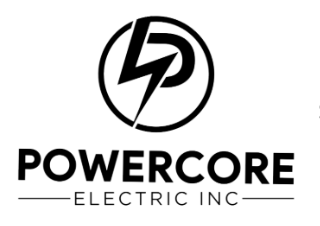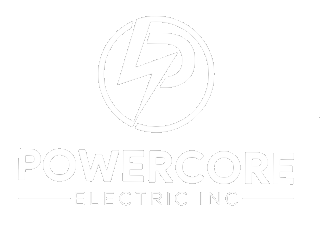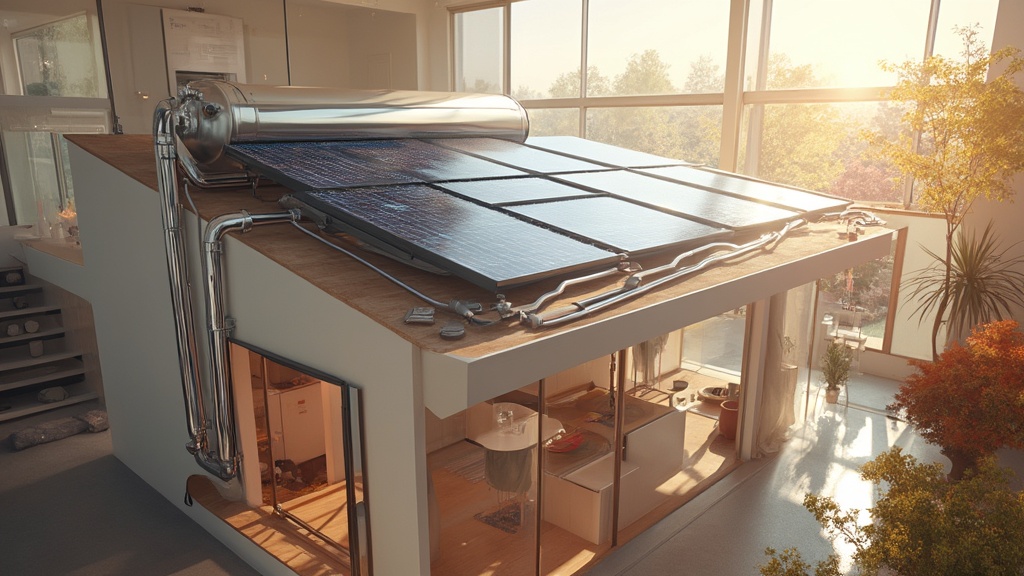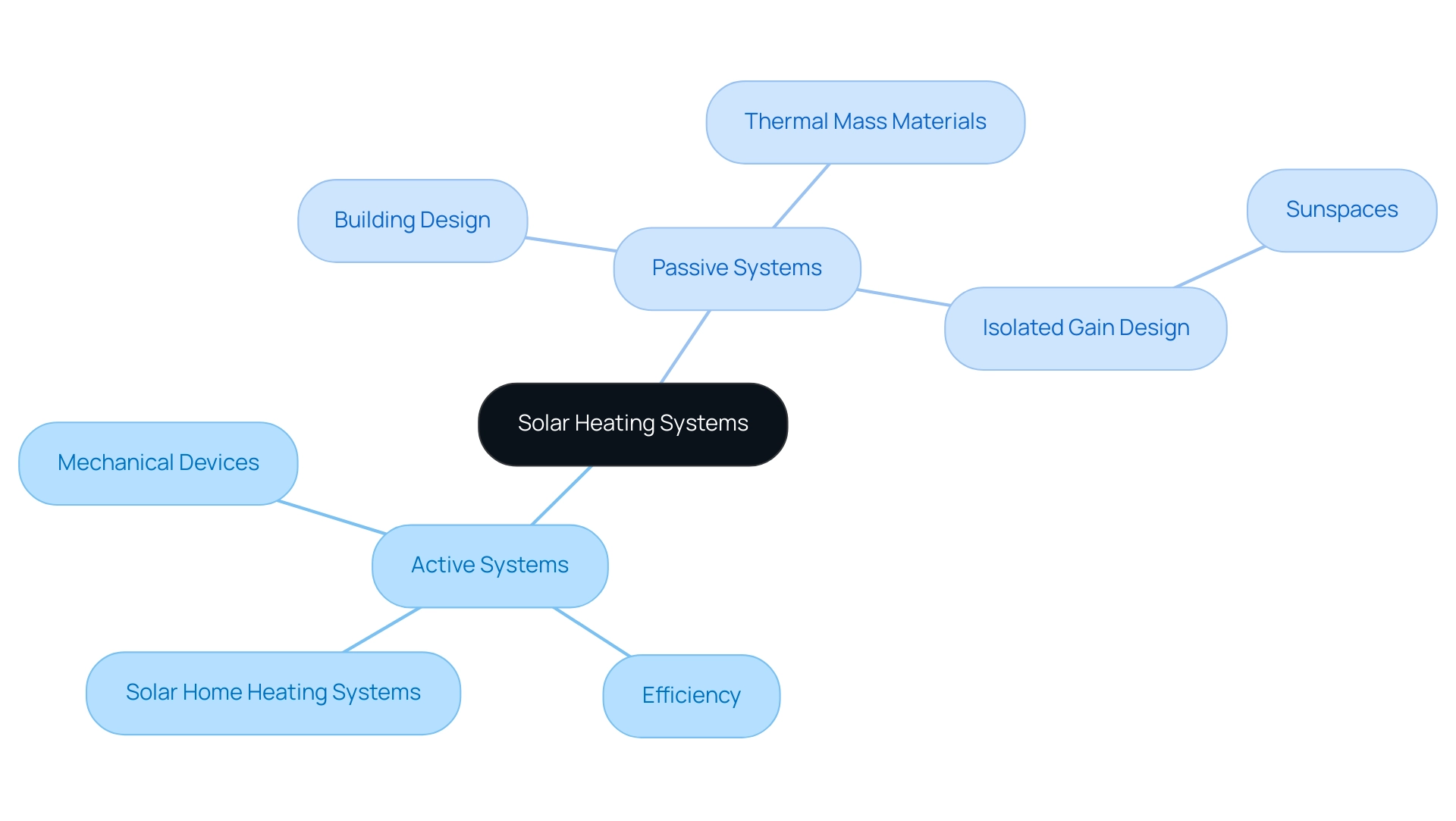Overview
Solar home heating can be understood through two primary systems: active and passive, each offering unique benefits for homeowners. The article details how active systems utilize mechanical devices for heat circulation, while passive systems rely on building design and materials to naturally capture and distribute solar energy, ultimately helping homeowners reduce energy costs and carbon footprints.
Introduction
The sun has long been a powerful source of energy, and today, it offers homeowners an exciting opportunity to harness that power for heating their homes. With the choice between active and passive solar heating systems, there’s a solution for every lifestyle and energy need.
- Active systems, like solar water heaters, use mechanical devices to efficiently circulate heat.
- Passive systems rely on smart design and natural materials to maintain warmth without any moving parts.
As homeowners increasingly seek ways to cut energy costs and reduce their carbon footprints, understanding these two approaches can pave the way to a more sustainable and comfortable living environment.
Whether it’s through innovative technology or thoughtful architectural design, solar heating presents a pathway to not only enhance home efficiency but also embrace a greener future.
Introduction to Solar Heating: Active vs. Passive Systems
When considering thermal energy from the sun, you can view it in two primary approaches: active and passive methods. Active heating setups are the go-getters of the energy world, utilizing mechanical devices like pumps and fans to circulate air or fluid for warmth. A prominent illustration here is solar home heating systems that capture the sun’s power through panels to warm water for your residence.
These systems can be likened to heat exchangers, which transfer heat from one medium to another, often offering a more efficient method to utilize power alongside thermal heaters. In fact, utility-scale photovoltaic facilities generated approximately 144 million megawatt hours in 2022, sufficient electricity to supply over 13 million homes, emphasizing the important role of this renewable resource in our lives. On the flip side, passive thermal heating takes a more laid-back approach.
It depends on careful building design and materials to capture, store, and distribute solar power without any mechanical assistance. Imagine large south-facing windows that invite sunlight in and thermal mass materials, like concrete or stone, that naturally absorb and radiate heat. A practical application of this is seen in Isolated Gain Passive Solar Design, where spaces like sunspaces can provide auxiliary heat and serve multiple functions, enhancing the overall comfort of a home.
Real-life case studies have demonstrated that homes employing these methods achieve considerable decreases in expenses and carbon footprints. By grasping these two categories, you can better determine which system suits your requirements and complements your lifestyle, making your home cozy and eco-friendly. Moreover, understanding the optimal angle for installing energy panels can significantly maximize their output.
As the USAFacts group observed, utility-scale photovoltaic installations produced eight times more power in 2022 compared to 2014, highlighting the increasing importance of renewable solutions. By incorporating solar home heating through both active and passive setups into your home, you can not only decrease your carbon footprint but also experience significant cost savings over time.
Implementing Solar Heating: Installation, Maintenance, and Economic Benefits
Setting up a solar home heating system powered by the sun is a fulfilling experience that can improve your home’s efficiency and worth. Here’s a friendly guide to help you every step of the way:
-
Assessment: Begin by evaluating your home’s power requirements and the amount of sunlight it receives.
This evaluation will assist you in figuring out how much energy you can produce with sunlight for solar home heating, and comprehending your energy requirements is essential for optimal performance.
-
Understanding Solar Panel Functionality: Solar panels work by converting sunlight into electricity through photovoltaic cells.
When sunlight hits these cells, it creates an electric field that generates direct current (DC) electricity. This DC electricity is then converted into alternating current (AC) by an inverter, allowing it to be used in your home. Choosing the appropriate inverter is crucial for enhancing your setup’s efficiency, so take into account best practices for inverter selection.
-
Selection: Next, pick the appropriate type of energy collection setup for your needs. For example, solar home heating systems, including water heaters powered by the sun, are ideal for supplying hot water, while air heaters using sunlight can maintain warmth in your living areas.
Be aware that installation and maintenance expenses can differ greatly among various water warming solutions, so take these factors into account prior to making a purchase.
-
Best Battery Choices: Efficient power storage is vital for maximizing the benefits of your solar home heating system.
Consider options like lithium-ion batteries, which provide high power density and longer lifespans, or lead-acid batteries, which are more affordable but may require more maintenance. Selecting the right battery will ensure that you can store excess energy generated during the day for use at night or during cloudy days.
-
Installation: It’s essential to hire a qualified installer who understands local regulations and can enhance your setup’s performance.
According to industry feedback, 85% of installers using NREL’s SolarAPP+ permitting software report that it makes the permitting process significantly easier, ensuring a smoother installation experience. The average expense of a solar installation in Wyoming is $43,491 before incentives and $30,444 after incentives, which highlights the financial impact of these incentives.
-
Regular upkeep is key to keeping your setup running efficiently. For operational setups, check for leaks and ensure all components are functioning correctly.
For passive setups, simply keep the area free from any obstructions that could block sunlight. Innovative cleaning solutions can also enhance the longevity and efficiency of your energy panels, making regular upkeep essential.
Economic Benefits: The advantages of thermal energy installations go beyond merely reduced energy expenses; they can greatly enhance your property’s worth. Homeowners in Wyoming, for instance, can anticipate average savings of $5,916 over 25 years from their energy investments. Additionally, with an average tax credit value of $13,047, homeowners can often recoup their initial costs in just a few years.
This makes using renewable energy not only an eco-friendly option but also a wise financial choice, aligning with the economic and ecological advantages of these technologies.
Exploring Different Types of Solar Heating Systems
When it comes to solar home heating solutions, environmentally aware homeowners have an exciting selection of choices, each offering distinct benefits. Let’s break them down:
-
Solar Water Heaters: Ideal for warming water for daily use, these units employ collectors that absorb sunlight, then elevate the temperature of water stored in a tank.
This method significantly lowers utility bills while ensuring you enjoy hot showers year-round. A home in Southern California, for instance, experienced a remarkable reduction in their utility costs by more than 70% after setting up a water warming apparatus paired with a heat exchanger. Solar home heating systems are specifically designed to harness solar power for warming air and circulate heated air throughout your home.
They’re particularly beneficial for space heating and can complement traditional setups, making chilly winters much cozier. In cooler regions, passive energy collection designs have demonstrated high efficiency, such as a home that utilized large south-facing windows to capture and retain sunlight during winter months.
-
Solar Pool Heaters: If you’re a swimming enthusiast, solar pool heaters can transform your swimming experience.
They effectively warm your pool, allowing for longer enjoyment, even during cooler weather.
-
Thermodynamic Solar Heating Solutions: A more advanced option, these solutions use a heat pump to extract heat from the air and transfer it to water, maintaining efficiency across various climates.
These setups can reduce a household’s carbon output by 20 to 40 percent and lower monthly energy expenses by 30 percent, according to Clean Energy Resource Teams.
Each variety of solar home heating brings its own set of benefits, making it essential to consider what best fits your home’s particular needs. With the worldwide energy sector anticipated to expand from $189.5 billion in 2022 to $607.8 billion by 2030 at an annual growth rate of 20%, investing in thermal solutions is not only environmentally friendly, but also becoming more attainable.
Moreover, the increasing demand for photovoltaic installations combined with battery storage—projected to represent 28% of new distributed renewable capacity by 2028—underscores a notable trend in the market.
As highlighted in recent conversations regarding environmental methods, adopting these technologies can significantly decrease your carbon footprint while providing considerable savings, making thermal energy solutions an appealing option for eco-aware homeowners.
Design Considerations for Effective Solar Heating
To ensure your solar heating system operates at its best, pay close attention to these key design elements:
-
Orientation: Positioning your solar collectors to face the sun is crucial for optimal performance. Generally, south-facing installations yield the highest energy capture throughout the day.
In fact, setups can achieve maximum temperatures of 51.4 °C at a flow rate of 5.3 L/min, demonstrating the importance of proper orientation. Additionally, determining the best angle for your panels can significantly enhance their efficiency, making it essential to consider local climate and geographical factors.
-
Thermal Mass: Utilizing materials such as concrete or brick can significantly enhance your setup’s efficiency. These substances retain sunlight and discharge it slowly, contributing to solar home heating and assisting in sustaining a steady warmth in your residence. Research indicates that the right combination of thermal mass materials can lead to substantial performance improvements.
For instance, a study by Khargotra et al. highlighted that a blockage ratio of 0.20, an angle of attack of 45°, and a pitch ratio of 0.5 resulted in the most considerable thermo-hydraulic enhancement.
-
Insulation: Effective insulation is vital for minimizing heat loss. Ensure to assess and enhance your home’s insulation in walls and attics to maximize the advantages of your energy system. This will not only enhance efficiency but also guarantee that the resources for solar home heating are utilized effectively.
-
Window Placement: Thoughtfully placing windows can enhance passive thermal heating. Windows that allow sunlight to flood your living spaces directly can significantly contribute to warming your home naturally.
-
Battery Options: Choosing the appropriate batteries is crucial for effective power storage. Lithium-ion batteries are favored for their high power density and longevity, while lead-acid batteries are a cost-effective option for those on a budget.
Evaluate your power requirements and finances when selecting a battery to guarantee it enhances your thermal collection setup efficiently. These design factors are crucial for enhancing the efficiency of your solar home heating solutions. Incorporating them during installation can lead to a more efficient and comfortable living environment.
As highlighted in recent studies, proper collector sizing, battery choices for efficient energy storage, and optimal orientation further improve performance, making these choices even more important for eco-conscious homeowners.
Financial Incentives and Rebates for Solar Heating Systems
If you’re a property owner considering renewable energy solutions, you’ll be happy to discover an array of financial incentives and rebates that can help ease the initial expense.
-
Federal Tax Credit: Currently, you can claim a generous tax credit of 26% on the installation costs of solar home heating systems, making it an appealing option for many.
This federal tax credit for renewable energy has no income limit, meaning that anyone with taxable income can take advantage of it, maximizing your savings. However, it’s important to note that the combined credit for all residents can’t exceed $1,667 for each half kilowatt of fuel cell capacity, which may impact your overall savings.
-
State Incentives: In California, for example, a variety of state-specific incentives is available, including rebates and low-interest loans, aimed at making the installation of renewable energy systems more affordable.
-
Local Programs: Don’t overlook your local government; many municipalities offer additional rebates or incentives for homeowners adopting renewable energy solutions.
-
Utility Company Programs: Be sure to check in with your utility provider, as they may have their own unique incentives for customers who choose to install photovoltaic systems. Furthermore, as Joe Kleczynski, a Certified Personal Accountant and Tax Manager, observes, ‘You can still claim the full cost of the panels if you finance instead of purchasing outright.’
However, financing costs and interest would not be eligible to include, only the cost of the panels and installation; by thoroughly researching these financial options, you can uncover significant savings, making the transition to solar home heating not only environmentally friendly but also financially savvy.
Moreover, shifting to renewable power aids in climate change reduction and improves public health by lowering harmful pollutants in the atmosphere, as emphasized in case studies on the ecological advantages of alternative power sources. This also includes incorporating renewable solutions with EV charging, such as Tesla home chargers, which generally range from $500 to $700 for installation, offering homeowners a complete management strategy that encourages long-term sustainability.
When comparing the costs and benefits of solar home heating versus traditional electricity, solar energy often proves to be more cost-effective in the long run, especially when considering ongoing utility costs and the potential for energy independence.
Conclusion
Harnessing solar energy for heating is not just a trend; it’s a vital step toward creating a more sustainable and cost-effective home. By understanding the differences between active and passive solar heating systems, homeowners can make informed decisions that align with their energy needs and lifestyle preferences.
Active systems, like solar water heaters, provide efficient heating through mechanical means, while passive systems capitalize on smart design and natural materials to maintain warmth without additional energy input.
As outlined, the installation and maintenance of these systems can significantly enhance home efficiency and value. With careful planning and consideration of factors like orientation, thermal mass, and insulation, homeowners can optimize their solar heating systems for maximum performance. Additionally, the financial incentives and rebates available make the transition to solar heating not only environmentally friendly but also financially advantageous.
Ultimately, investing in solar heating solutions is a proactive choice that contributes to both personal comfort and environmental stewardship. By embracing these technologies, homeowners can enjoy substantial energy savings while playing a crucial role in reducing their carbon footprint. As the solar industry continues to grow, now is the perfect time to explore the possibilities of solar heating and take a step toward a greener, more efficient future.



